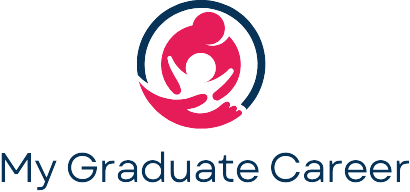Table of Contents
ToggleNavigating the world of higher education can feel like trying to solve a Rubik’s Cube blindfolded. With tuition costs skyrocketing, many students and their families are left wondering how to make ends meet without resorting to a life of ramen noodles and couch surfing. Luckily, tuition assistance savings programs are here to save the day—or at least your bank account!
Understanding Tuition Assistance Savings
Tuition assistance savings programs support students and families navigating rising education costs. These programs help alleviate financial strain while focusing on maintaining a quality lifestyle.
What Is Tuition Assistance?
Tuition assistance refers to financial aid provided by various entities to help cover education expenses. Employers often offer these benefits to employees pursuing educational advancement. Educational institutions also provide assistance directly to students to promote learning and retention. Individuals may apply for help through government programs that target specific demographic groups. Such assistance reduces overall tuition bills, making higher education more accessible.
Types of Tuition Assistance Programs
Numerous types of tuition assistance programs exist to meet different needs. Employer-sponsored tuition reimbursement plans provide funds after course completion. Federal programs, like Pell Grants, offer need-based financial aid to eligible undergraduates. State-funded scholarships target residents attending specific colleges or universities. Institutional grants present another option, funded by colleges themselves, aimed at attracting students. Private scholarships, offered by organizations or foundations, are also widely available and can supplement other forms of assistance.
Benefits of Tuition Assistance Savings

Tuition assistance savings programs provide significant advantages for students navigating the challenges of higher education costs. These programs directly address financial concerns, making education more attainable for many.
Financial Relief for Students
Financial relief emerges as a primary benefit of tuition assistance savings. Programs such as employer-sponsored reimbursement plans significantly reduce out-of-pocket expenses for students. Receiving financial aid from institutions or state-funded scholarships alleviates financial burdens that families might face. Grant opportunities enhance students’ ability to focus on their studies, rather than worrying about tuition payments. As a result, fewer students experience overwhelming debt, inspiring them to pursue educational goals with confidence.
Increased Access to Education
Increased access to education stands out as another crucial benefit of tuition assistance savings. Various programs enable a diverse range of students to enroll in higher education institutions regardless of their financial background. Federal Pell Grants and institutional scholarships specifically target low-income individuals, broadening participation in college and university programs. Additionally, tuition assistance fosters inclusivity, allowing underrepresented groups to enter fields traditionally dominated by others. Consequently, these programs play a pivotal role in promoting educational equity and empowering future generations.
How to Apply for Tuition Assistance
Applying for tuition assistance involves understanding eligibility and navigating the application process efficiently. Various institutions provide clear pathways for potential applicants.
Eligibility Requirements
Eligibility requirements vary by program. Typically, applicants must demonstrate financial need, maintain satisfactory academic progress, and enroll at eligible institutions. Some employers offer assistance based on the length of employment or job title. Federal Pell Grants target undergraduate students with significant financial barriers. Additionally, state-funded scholarships often appeal to residents attending in-state colleges. Students aiming for institutional grants usually need to meet specific criteria set by their colleges.
Application Process
The application process generally starts with gathering necessary documentation. Applicants often need personal information, financial aid forms, and academic records. Many programs require the completion of the FAFSA, which determines federal and state aid eligibility. Employers may have their own forms for tuition reimbursement. After submitting applications, tracking their status can prove essential. Deadlines for submissions vary, so applicants should remain vigilant to avoid missing opportunities. Prompt follow-ups can also enhance chances of receiving assistance.
Common Challenges in Tuition Assistance Savings
Tuition assistance savings programs face several challenges that can hinder their effectiveness. Awareness of these challenges helps students and families navigate their options more effectively.
Misconceptions About Programs
Many individuals mistakenly believe tuition assistance is only for low-income students. This statement overlooks the fact that numerous programs cater to a wide range of income levels. Employers also frequently offer assistance to help retain and develop talent. Some assume that assistance programs cover all educational expenses, yet this is rarely the case. Limited coverage often means students need supplementary resources. Additionally, myths about complicated application processes discourage applicants, yet many programs strive to simplify submissions.
Navigating Complex Requirements
Complex eligibility requirements often confuse potential applicants. Each program has unique criteria, leaving students unsure if they qualify. For instance, some programs require full-time enrollment, while others accept part-time students. Understanding financial need calculations can also be daunting. Documentation requirements may include tax returns or academic transcripts, further complicating the process. Students who fail to adhere to deadlines may miss opportunities. Keeping track of different requirements proves essential for maximizing benefits.
Tuition assistance savings programs offer a vital lifeline for students navigating the complexities of higher education costs. By providing financial support from various sources, these programs empower individuals to pursue their academic goals without the overwhelming burden of tuition fees.
The benefits extend beyond financial relief; they promote inclusivity and diversity in educational settings. As more students gain access to higher education, the potential for a richer and more equitable academic environment increases.
Understanding the application process and eligibility requirements is crucial for maximizing the advantages of these programs. With the right information and preparation, students can unlock the support they need to succeed in their educational journey.







